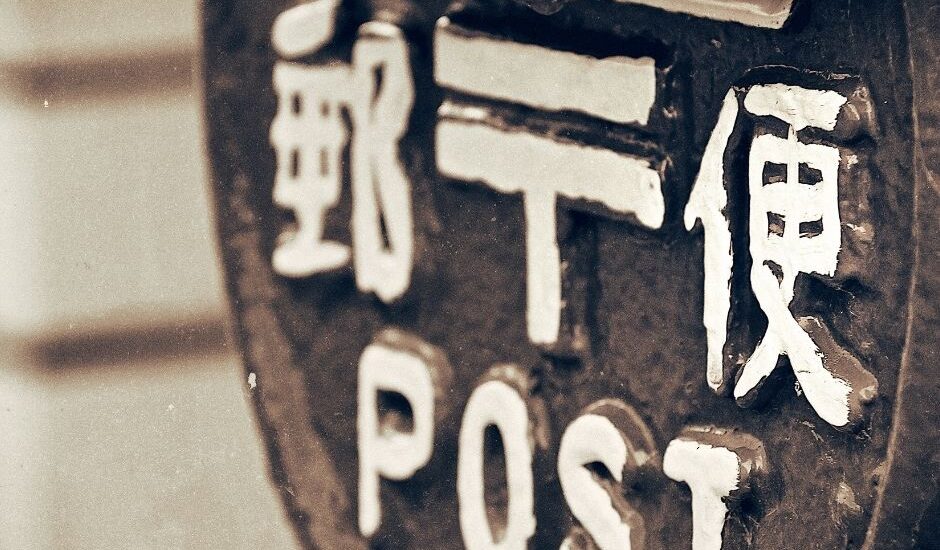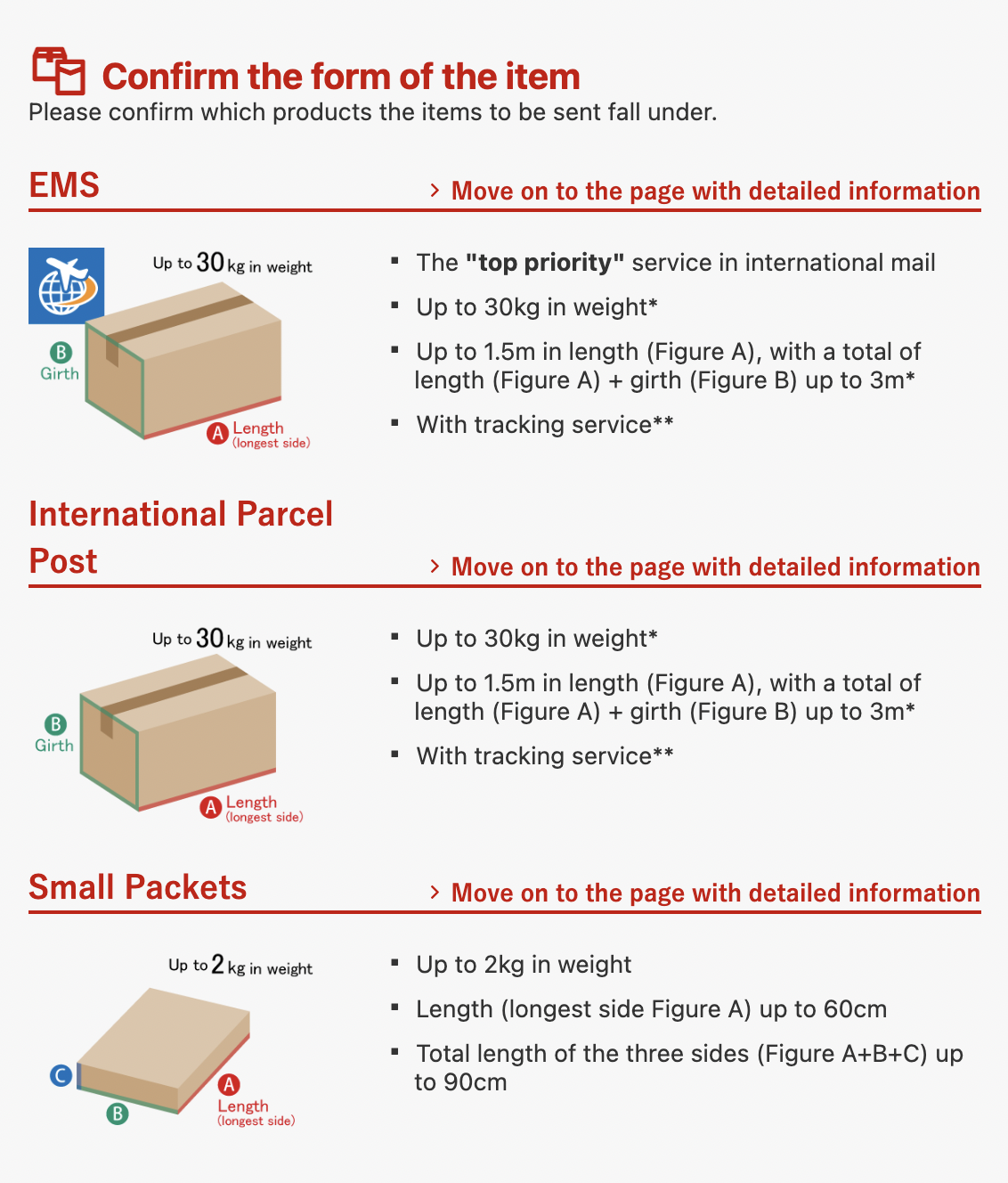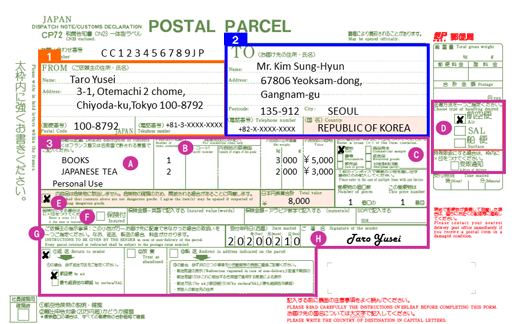There comes a time in our lives when we need to send something, whether a letter or package, to someone domestically or internationally. But how to do so in a country that speaks a language you might not be familiar with?

The following guide explains how to send mail from and within Japan so that you can walk into that post office confidently and not be left dumbfounded when an unforeseen scenario occurs.
This one time, our daughter wanted to send her friend who lived in Kyoto some stationaries and a letter. I purchased a small box, wrapped it nicely like a gift and then went to the nearest Japan Post office. Take note that it was a small box with stationaries and a letter. It didn’t contain prohibited items or whatnot. So my unsuspecting self wrote “tegami” and “bunbogu” on the item breakdown portion. Then the staff told me that I can’t include a letter with the box and that it must be sent individually or everything through the designated “Letter Pack” option.
While I was nodding my head “hai, wakarimashita” on the outside, I thought, “What in the world is this?” After my daughter worked hard to make the packaging pretty with stickers and potpourri, do we need to destroy the packaging and send them separately or squish them all in an ugly envelope?
I grabbed another blank parcel label and told them I’ll be back after “following the instructions.” I bought some time not to be so obvious and then wrote “bunbogu” only on the new invoice. We were able to send out the package with no changes. Long story short, don’t put “letter” with other items or ship it out in a letter pack. Who knew?

Types of packages
To send mail seamlessly within and outside Japan, let’s first discuss the types of packages allowed among the leading courier companies in the country, namely Yamato Transport (Kuroneko), Sagawa Logistics, and Japan Post.
Japan Post categorizes its parcels into Yu-Packet (up to 60cm total size and 1kg total weight), Yu-Pack (170cm and 25kgs), and Letter Pack (envelope size up to 4kgs). Yamato and Sagawa, on the other hand, categorize parcels into box sizes, as seen below.

You can also choose to have your box and items on hand and input the sizes, weight, and other details to get your total bill. The three couriers also offer “cool” parcels, meaning items that need to be sent in chilled or frozen condition within Japan.
For sending items abroad, you can opt for Japan Post’s EMS (fastest and most expensive), Airmail (by air, fast and less costly than EMS), SAL (by ship, slowest but cheapest), Yamato’s International TA-Q BIN, or Sagawa’s sgx (Sagawa Global Express) option.
These companies have websites available in English and accept requests for picking up your parcel at home. You can also find detailed guides on packing your items, the prohibited items, rates and delivery dates, and other essential information.

Costs and shipping duration for sending domestically and internationally
Here’s a quick guide to comparing the prices and shipping schedule for each package type by the couriers mentioned above. Take note that the rate and schedule change depending on the zone or location of the destination.
| Courier | Domestic | Delivery time | International | Delivery time | Customer support (English) |
| JP Post | Yu-Mail: from ¥180/150g
Yu-Pack: from ¥810/60 size |
~ 1 day | EMS: from ¥1,400/500g
Air: from ¥1,700/500g SAL: from ¥1,600/500g |
2-4 days
8-10 days 2-3 mos |
0570-04-6111 |
| Yamato | Small parcel: ¥660/60 size
General parcel: ¥1,040/60 size |
~ 1 day | 60 size: ¥2,050
160 size: ¥18,950 |
~3 days | 0120-17-9625 |
| Sagawa | Mail: ¥325/1kg
Parcel: ¥770/60 size |
3-4 days | Small parcel: ¥4,200/500g | Not specified | 0120-18-9595 |
When sending packages abroad, take note of the box size limitations between each category. For example, Japan Post’s limitations change between shipping methods. It is best to call the courier’s customer service to confirm if the specific method is currently active. Due to the coronavirus pandemic, some methods have been postponed sporadically. The three leading couriers have hotlines that cater to inquiries in English.

Essential information you need to send mail successfully
You will need a few crucial information to send out your mail with no hiccups. The most important is the address, specifically, the postcode, prefecture, ward, district, street number, building name, and unit number or floor number (optional) for a Japanese address, in that order.
The same order applies to international mail, so it is advised to make a quick Google search to get the details correct and avoid undelivered mail. It would help if you also had the receiver’s name and phone number for reference (domestic mail). The good thing is, you can write the details in Romaji or English and have no issues.
Sample parcel label/waybill
Your next task would be filling up the waybill or parcel labels. For sending items domestically, you can fill up the parcel label readily available at the post office.
When sending international mail, you might need to fill up the forms online, as some couriers like JP Post no longer accept handwritten waybills for certain countries.

Check out the following links for a complete tutorial on filling up waybills.
Sending your first parcel or mail domestically or abroad might seem confusing at first. On the bright side, the best couriers won’t leave you hanging because they provide all the information you need. You can also use this guide as a general overview of the process and comparison of the courier companies.
Related Articles
Warning: Undefined array key "sfsi_threadsIcon_order" in /home/veremosglobal/tokyoroomfinder.com/public_html/blog/wp-content/plugins/ultimate-social-media-icons/libs/controllers/sfsi_frontpopUp.php on line 165
Warning: Undefined array key "sfsi_blueskyIcon_order" in /home/veremosglobal/tokyoroomfinder.com/public_html/blog/wp-content/plugins/ultimate-social-media-icons/libs/controllers/sfsi_frontpopUp.php on line 170
Warning: Undefined array key "sfsi_bluesky_display" in /home/veremosglobal/tokyoroomfinder.com/public_html/blog/wp-content/plugins/ultimate-social-media-icons/libs/controllers/sfsi_frontpopUp.php on line 266



